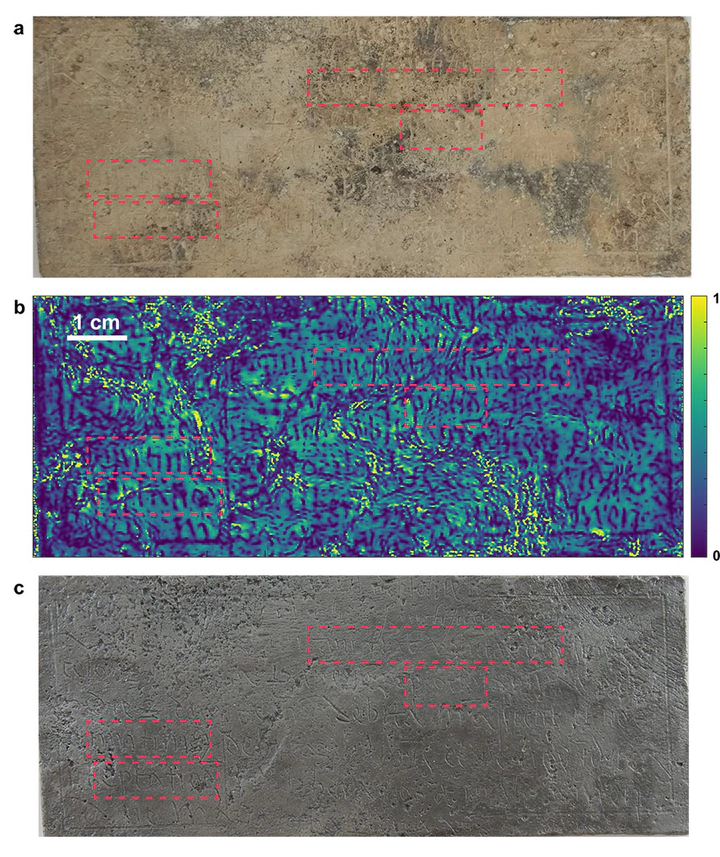Revealing inscriptions obscured by time on an early-modern lead funerary cross using terahertz multispectral imaging

Abstract
The presence of a corrosion layer on lead art and archæological objects can severely impede the interpretation of inscriptions, thus hampering our overall understanding of the object and its context. While the oxidation of lead that dominates corrosion may be chemically reversible via reduction, potentially providing some access to inscriptions otherwise obscured by time, corrosion damage is overall neither entirely reversible nor is the reduction process in all cases easy or feasible to carry out. In this study, by taking advantage of the unique penetration ability of terahertz radiation and the abundant frequency bands covered by a single-cycle terahertz pulse, we perform nondestructive terahertz multispectral imaging to look under the corrosion on a sixteenth century lead funerary cross (croix d’absolution) from Remiremont in Lorraine, France. The multispectral images obtained from various terahertz frequency bands are fed into a judiciously designed post-processing chain for image restoration and enhancement, thus allowing us for the first time to read obscured inscriptions that might have otherwise been lost. Our approach, which brings together in a new way the THz properties of the constituent materials and advanced signal- and image-processing techniques, opens up new perspectives for multi-resolution analysis at terahertz frequencies as a technique in archæometry and will ultimately provide unprecedented information for digital acquisition and documentation, character extraction, classification, and recognition in archæological studies.